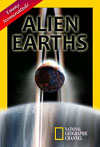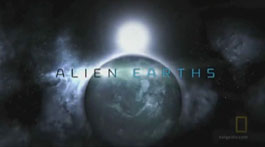This short documentary is one of the best introductions to the science
of exo-planet hunting to be found in television, as it goes in-depth
with a lot of details on specific famous planets and covers a wide variety
of planet types. It remains highly focused, well-paced, and presents
its information to the audience respectfully and intelligently.
The Kepler Mission bookends the film, as it begins with the then-recent launch
of the specialist telescope in March of 2009, and ends with the high hopes that
scientists had of the discoveries that would be forthcoming. In between,
we get a comprehensive overview of the exoplanet discoveries that had taken
place so far....
Exoplanets discussed include:
- 51 Pegasi b (This documentary not only interviews this first exoplanet's
discoverer Michel Mayor, but it also may be the strongest documentary to
try to popularize Geoff Marcy's unofficial nickname
for the planet: Bellerophon. It wouldn't be until 2015
that the International Astronomical Union held a vote deciding that
the planet's official name would become "Dimidium".)
- The Eagle Nebula star-forming region
- HD 209458 b, nicknamed "Osirus", the first exoplanet whose composition
scientists could determine.
- 16 Cygnus B b - the "Yoyo Planet" with its 26-month elongated orbit.
Much time is spent speculating on the seasonal conditions that might exist
should this planet have an Earth-like moon orbiting it.
- Planimos - rogue planets with no star to orbit
- pulsar planets in Virgo
- Destroyed planet debris disc orbiting HD 23514 in the Pleiades Cluster.
A collision of two planets, or the vengeful retaliation for interference
with the Orion Empire? This event is compared with the here-unnamed
Theia Impact Theory of the formation of our own Moon.
- Super-Earths
- Gliese 581 c - a popular water-world super-Earth in Libra,
discovered by Michel Mayor. At the time, 3 planets were known
in the system (b, c, and d). As the possibility of life
on planet c is discussed, it is compared with Europa.
- Carbon planets - Curiously, it is implied that only under conditions
very different than in our solar system can carbon planets form,
even though the description of a carbon planet is exactly
what was actually found on Saturn's moon Titan, which isn't mentioned.
The original American version features narration by Craig Sechler
listing many distances measured in miles,
and temperatures measured in "degrees" with the Fahrenheit scale being assumed rather
than specified.
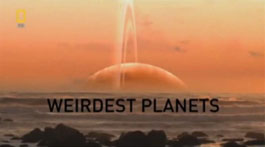 International versions of the documentary can also be found, though in many
cases the title has been changed to "Weirdest Planets". U.K. narrator
Christopher Kent works with an improved narration text, where distances
are given in miles and kilometres, and temperatures are specified
in degrees Celsius. Much more civilized. In many places, the international
versions also feature extra footage and information. (For example,
three extra shots during the "winter" section of the 16 Cygnus B Yoyo moon sequence.)
International versions of the documentary can also be found, though in many
cases the title has been changed to "Weirdest Planets". U.K. narrator
Christopher Kent works with an improved narration text, where distances
are given in miles and kilometres, and temperatures are specified
in degrees Celsius. Much more civilized. In many places, the international
versions also feature extra footage and information. (For example,
three extra shots during the "winter" section of the 16 Cygnus B Yoyo moon sequence.)
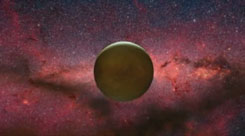
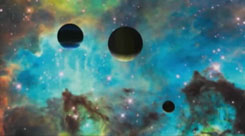
|
Participants include:
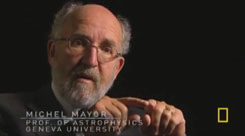 |
Michel Mayor
Professor of Astrophysics,
Geneva University
● co-discoverer with Didier Queloz of
the first exoplanet 51 Pegasi b.
|
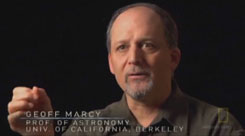 |
Geoff Marcy
Professor of Astronomy,
University of California, Berkeley
● As of the first 300 exoplanets discovered by 2009,
he and colleague Paul Butler had been credited with
finding more extra-solar planets than anyone else.
|
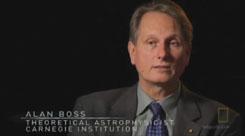 |
Alan Boss
Theoretical Astrophysicist,
Carnegie Institution
● reviewed the paper of the first discovery of
a hot jupiter extra-solar planet: 51 Pegasi b, in 1995
|
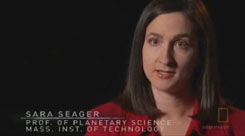 |
Sara Seager
Professor of Planetary Science,
Massachusetts Institute of Technology (M.I.T.)
|
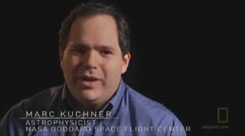 |
Marc Kuchner
Astrophysicist,
NASA Goddard Space Flight Center
|
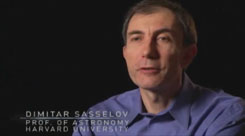 |
Dimitar Sasselov
Professor of Astronomy
Harvard University
|
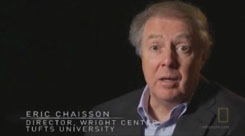 |
Eric Chaisson
Director, Wright Center
Tufts University
|
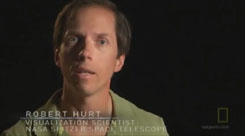 |
Robert Hurt
Visualization Scientist,
NASA Spitzer Space Telescope
CALTECH
|
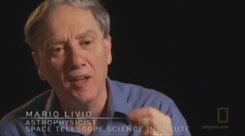 |
Mario Livio
Astrophysicist,
Space Telescope Science Institute
|
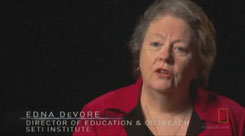 |
Edna DeVore
Director of Education & Outreach,
SETI Institute
|
|
